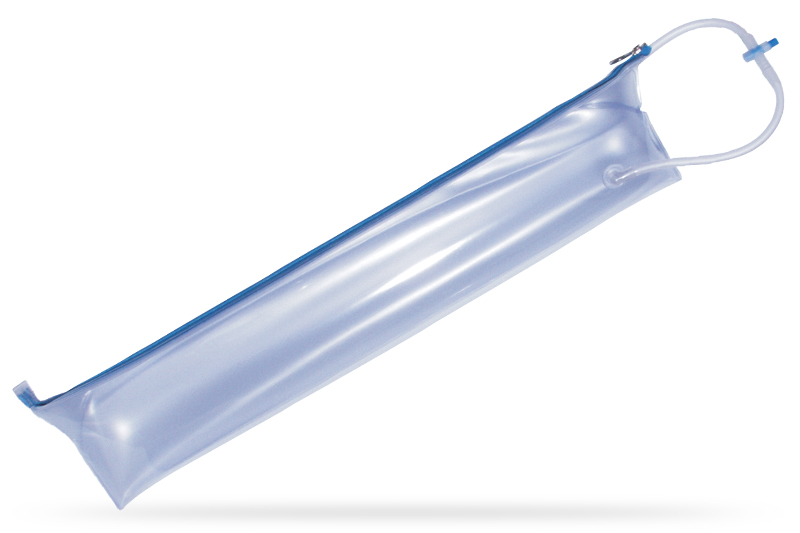Controlled Pneumatic Compression Therapy
Daily Sessions of mechanical alteration in pressure may be applied to the limbs when treating the disabled patients who develop chronic gravitational limb oedema. This treatment, with different treatment time, may be used to treat patients with sensory loss.
Applied with the patient comfortably positioned. If treating oedema the limbs should be supported in elevation. Special garments are applied to the patient’s limbs and then connected to the air outlet on the Intermittent Pressure Machine.
To avoid loss of position in the wrist, hand and elbow during treatment the Urias® arm splint may be used. The arm splint is applied to the correctly positioned limb, inflated by mouth and the valve closed. The inflation tube from the splint should then be connected to the air outlet tube on the Intermittent Pressure Machine. The valves on the splints opened after the machine has been switched on. Regulators for treatment times and pressures are then adjusted.
This procedure is important with the arm that needs careful positioning in order to inhabit spasticity. The limb can be seen clearly through the plastic of the splint, making for easy observation during treatment.
Uses:
Oedema may be brought under control with regular daily sessions of intermittent pressure given over a number of weeks.
After the oedema has been brought under control the limbs should be carefully monitored and booster treatment given as required.
The problem of chronic gravitational oedema in the limbs of the disabled patient maybe successfully controlled in this way.
Arrangements should also be made for the patient to sleep at night with the affected limbs suitably elevated and, where appropriate, rest periods during the day should also be included.
Daily passive movements are also beneficial.
Sensory loss:
Intermittent pressure will give a boost to sensory input and play a valuable role as part of a motor retraining programme where there is a defict in proprioception.
Recommended Treatment Pressures and Times
Oedema:
1: Inflate to 40mm Hg for 10 seconds
2: Deflate for 15 seconds
Time: 1-1½ hours (more if necessary)
Sensory Loss:
1: Inflate to 40mm Hg for 5 seconds
2: Deflate for 5 seconds
Time: 45 minutes
These pressures and times are safe to use and give good results
Pressures above 40mm Hg should not be used
Two sessions of tretment every day are recommended if the problem is severe
Stabilise the machine by adjusting the pressure control
Contra-Indications for Intermittent Pressure
1: If the patient suffers from acute pulmonary oedema
2: If the patient is in congestive heart failure
3: When acute deep venous thrombosis is present or suspected


